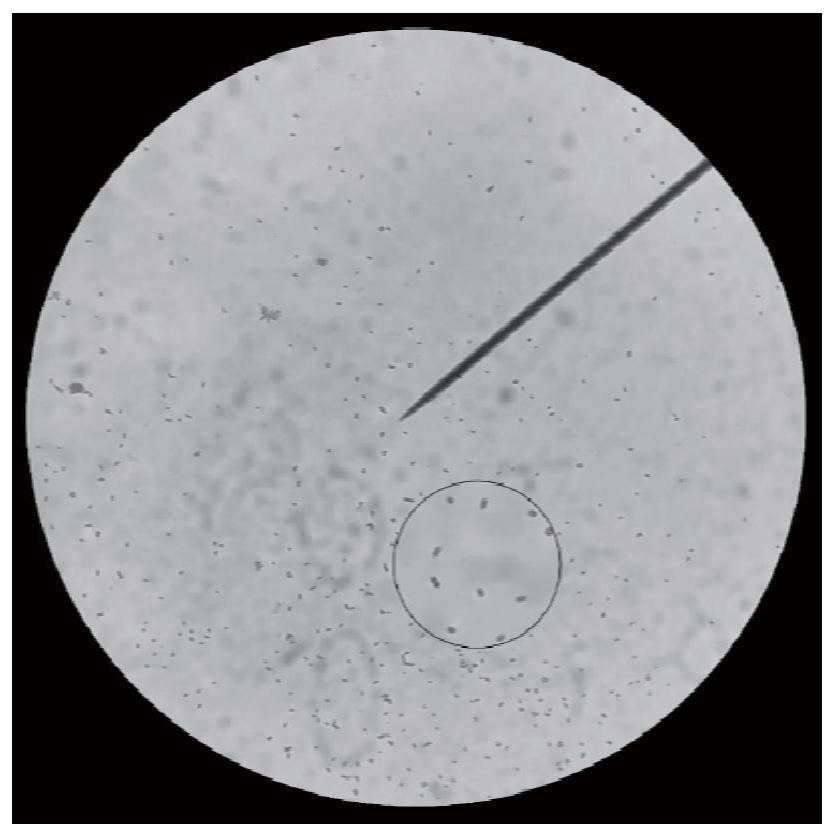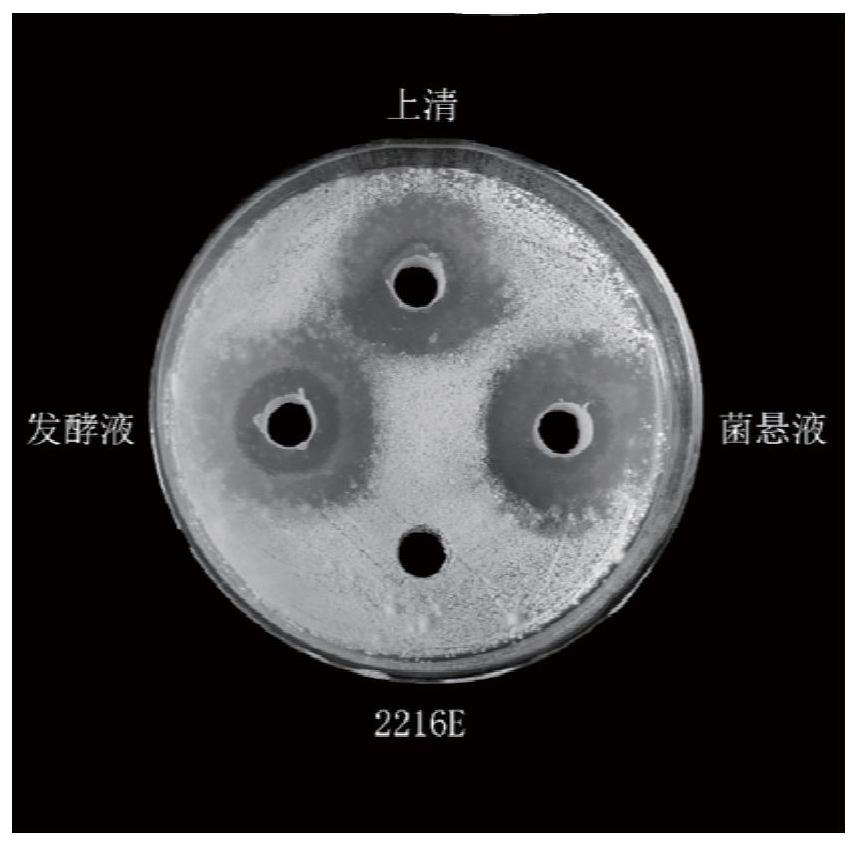Bacillus catonella strain DM4-2 with inhibiting effect on plant scab as well as fungicide and application thereof
A technology of Bacillus carinii and scab, applied in the field of microorganisms, can solve problems such as unachieved results and the complexity of plant resistance physiological mechanisms
- Summary
- Abstract
- Description
- Claims
- Application Information
AI Technical Summary
Problems solved by technology
Method used
Image
Examples
Embodiment 1
[0034] Embodiment 1: Isolation and purification of Bacillus cabrialesii DM4-2
[0035] Add 1 g of soil samples derived from oceanic sediments into a sealed glass bottle (filled with 1 / 50 concentration of 2216E medium for enrichment culture), and carry out oligotrophic recovery culture in an incubator at 25°C (or a similar temperature), shaking for one day twice. Then on the 2nd, 10th and 30th day, draw 1mL of culture solution into 10mL sterile water and mix well to make 10 -1 Diluent, draw 1mL10 -1 Add the diluent to 9mL sterile water and mix well to make 10 -2 diluent, and so on to make 10 -3 、10 -4 、10 -5 Diluent, take 10 -3 、10 -4 、10 -5The diluted solution was spread on 1 / 2 concentration 2216E solid medium, and cultured at 28°C.
[0036] Select a single colony with different morphological characteristics for purification, and inoculate the single bacterial colony in 2216E liquid medium, shake and culture at 28°C and 180rpm for 24-72h, and spread potato scab evenly...
Embodiment 2
[0037] Example 2: Identification of Bacillus cabrialesii DM4-2
[0038] 1. Morphological and physiological and biochemical characteristics of the strain
[0039] The colony morphology of bacterial strain DM4-2 on the LB solid plate is as follows: figure 1 Shown is round, milky white, opaque, indicating smooth moist, sticky texture, with irregular edges. Take the strains in the stable phase for Gram staining, such as figure 2 The lavender shown is a Gram-positive bacterium, all of which are oval in shape when observed under an optical microscope. The growth temperature of the strain DM4-2 is 28-37°C, the pH is 5-12, the optimum growth temperature is 28°C, and the optimum pH is 7.
[0040] 2. 16S rDNA identification of the strain:
[0041] Genome extraction kit was used to extract the genome of bacterial strain DM4-2, using it as a template, 16S rDNA universal primer 27F (5'-GAG AGT TTG ATC CTG GCT CAG-3') and 1492R (5'-ACG GAT ACC TTG TTA CGA CTT-3') primers were used to ...
Embodiment 3
[0044] Embodiment 3: the antagonistic effect of Bacillus cabrialesii DM4-2 cultured in different mediums
[0045] Inoculate the purified bacterial DM4-2 single colony in 2216E liquid medium for 24-72h under the conditions of 28°C and 180rpm, and then centrifuge at 12000rpm for 3min to obtain the supernatant, and then use a sterile Resuspend in water to obtain the bacterial suspension, and carry out antagonism experiment together with the fermentation broth (i.e. evenly spread 200 μL of potato scab pathogen S. Insert 100 μL of fermentation broth, supernatant, bacterial suspension, and 2216E liquid medium into the wells, culture at 28°C for 5 to 7 days, and judge the source of antibacterial substances by the presence or absence of antibacterial zones and the size of the antibacterial zones).
[0046] Experimental results such as image 3 As shown, the fermentation broth of the bacterial strain DM4-2 of the present invention has a better antagonistic effect. Using the same cult...
PUM
 Login to View More
Login to View More Abstract
Description
Claims
Application Information
 Login to View More
Login to View More - R&D
- Intellectual Property
- Life Sciences
- Materials
- Tech Scout
- Unparalleled Data Quality
- Higher Quality Content
- 60% Fewer Hallucinations
Browse by: Latest US Patents, China's latest patents, Technical Efficacy Thesaurus, Application Domain, Technology Topic, Popular Technical Reports.
© 2025 PatSnap. All rights reserved.Legal|Privacy policy|Modern Slavery Act Transparency Statement|Sitemap|About US| Contact US: help@patsnap.com



